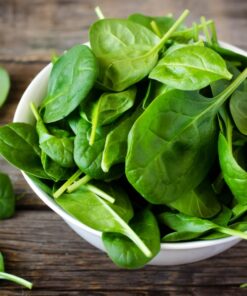Bottle gourd Seeds ghiya loki Hybrid pack of 20 seeds
₹50.00
In stock
SKU: ghiya
Category: Vegetable seeds
How to Grow Ghiya (Bottle Gourd) from Seeds in Indian Weather
Bottle gourd Seeds or Ghiya is one of the most favorite veggies of India. It is not difficult to grow, doesn’t need special care, and grows extremely well in Indian weather. If it is a garden, balcony, or terrace, it is not so challenging to grow ghiya from seeds with some hard work.
| Number of Seeds | 20 |
|---|---|
| Sowing month | Feb to Oct |
| Sowing temperature | 20-40C |
| Sun | minimum 3 hours |
| Harvest | 45-60 Days |
Choosing the Right Seeds
First, buy good-quality healthy ghiya seeds from a reliable supplier. Hybrid or disease-resistant seeds produce more. Buy seeds from a local nursery or online store.
Bottle gourd Seeds Soil Preparation
- Ghiya performs well in fertile well-draining soil. For soil preparation:
- Equalize ratios of compost, garden soil, and sand to provide draining.
- Mix organic manure like vermicompost or cow dung for fertility improvement.
- Maintain the soil pH between 6.0–7.5.
- Sowing the Seeds
Bottle gourd Seeds After soil preparation, do the following:
- Soak seeds 8–10 hours in water. This will accelerate germination.
- Plant seeds about 1 inch deep in the soil. Plant at least 2 feet apart.
- Water gently after planting so that the soil is moist.
Caring for the Plants
Bottle gourd Seeds Your ghiya plants require proper care to become healthy and robust.
- Watering: Water the plants regularly, particularly in summer. But not excessively, because that will rot the roots.
- Sunlight: Ghiya plants require at least 6–8 hours of sunlight per day.
- Support: The plant will require support once mature. Support the vine on a trellis or by placing bamboo sticks around it.
- Fertilizing: Provide organic manure fertilizers with a lag of two weeks for cultivation.
- Pest Control: Inspect for insects like aphids and caterpillars. Spray them with neem oil or bio-insecticides.
- Chilli kanthari good companion of ghiya
Bottle gourd Seeds Harvesting the Ghiya
Your ghiya is ready for harvest after approximately 50–70 days. Pick gourds when they are pale green and soft. If not picked, they will wilt and become bitter.
Final Thoughts
Lastly Ghiya can be grown easily at home and is a fulfilling experience. With proper care, you can enjoy fresh home-grown bottle gourd during the season. So plant now and enjoy the organic farming fruits!
| Color | Green |
|---|---|
| Germination Level | Easy |
| Growth Pattern | Trailing, Vine |
| Hybrid or Open Pollinated | Hybrid |
| Ideal location | Full sun |
| Origin Country | India |
Be the first to review “Bottle gourd Seeds ghiya loki Hybrid pack of 20 seeds” Cancel reply
You must be logged in to post a review.













Reviews
There are no reviews yet.